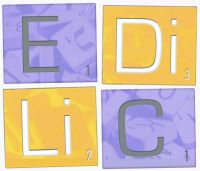Speaker
Description
Cette contribution vise à présenter les grandes lignes de la formation des futurs enseignants de langues et à promouvoir la diversité linguistique et culturelle dans un pays majoritairement monolingue comme la Pologne.
Selon le Recensement général de la population et du logement de 2021, 98,4 % des habitants de la Pologne utilisent le polonais dans leurs interactions domestiques, dont 94,3 % exclusivement (GUS, 2023). L'arrivée massive des Ukrainiens a néanmoins accru la présence de l’ukrainien dans l’espace public, tout en soulignant l’importance de l’apprentissage du polonais pour une intégration réussie (GUS, 2023).
Ces évolutions ont suscité un intérêt croissant pour les formations à l’enseignement du polonais comme langue étrangère. De nombreux enseignants de langues moins enseignées, comme le russe ou le français, se forment désormais pour répondre à ce besoin.
En réponse, un nouveau module a été intégré aux cours sur l’éducation plurilingue et multiculturelle. Destiné aux étudiants de troisième année, ce module prépare les futurs enseignants (bivocationnels : anglais + français, anglais + allemand, .) à adopter une approche inclusive (Sielanko, Zielińska, 2024). Il complète une formation qui aborde la géopolitique, les politiques linguistiques européennes et les entretiens avec des étrangers vivant en Pologne (Sielanko, Zielińska, 2024).
Le module propose l’analyse d’activités existantes et la création d’outils pédagogiques pour les enfants de 7 à 15 ans, s’appuyant sur le cadre FREPA (Candelier et al., 2017). Le projet final des étudiants consiste à explorer divers aspects de la diversité linguistique et culturelle en Pologne, comme les minorités nationales, les langues, les influences culinaires ou encore le rôle des traducteurs.
L’exposé présentera des exemples concrets des résultats et de l’organisation de ces projets.
References
Candelier, M., Camilleri-Grima,, cintribution , Castellotti, V., de Pietro, J., Lőrincz,, l., Meißner, F., Noguerol, A., & Schröder-Sura, A. (2017), FREPA. System opisu pluralistycznych podejść do języków i kultur. Kompetencje i zasoby. Warszawa: Ośrodek Rozwoju Edukacji.
Coste, D., Moore, D., & Zarate, G. (2009), Plurilingual and Pluricultural Competence. Strasbourg: Council of Europe. (Original work 1997)
Council of Europe. (2020), Common European framework of reference for languages: Learning, teaching, assessment — Companion volume. Strasbourg: Council of Europe, www.coe.int/lang-cefr [DW 20.05.2023]
Council of Europe. (2022), The importance of plurilingual and intercultural education for democratic culture: Recommendation CM/Rec(2022)1 and explanatory memorandum. Strasbourg: Council of Europe,
European Centre for Modern Languages of the Council of Europe (ECML). (n.d.). Celebrate the European Day of Languages with us! https://edl.ecml.at/Home/tabid/1455/language/en-GB/Default.aspx
Główny Urząd Statystyczny. (2023). Struktura narodowo-etniczna oraz językowa ludności Polski według wstępnych wyników Narodowego Spisu Powszechnego Ludności i Mieszkań 2021. Główny Urząd Statystyczny. https://stat.gov.pl/spisy-powszechne/nsp-2021/nsp-2021-wyniki-wstepne/
Główny Urząd Statystyczny. (2023). Wpływ napływu ludności z Ukrainy na polski rynek pracy i edukację. Główny Urząd Statystyczny. https://stat.gov.pl/aktualnosci/wplyw-ukraincow-na-polski-rynek/
Ministerstwo Spraw Wewnętrznych i Administracji. (n.d.). Mniejszości narodowe i etniczne w Polsce oraz ich języki. gov.pl. https://www.gov.pl/web/mniejszosci-narodowe-i-etniczne/mniejszosci-narodowe-i-etniczne-w-polsce-oraz-ich-jezyki
Sielanko-Byford, E., & Zielińska, J. (2024). Promowanie różnorodności językowej i kulturowej w kształceniu nauczycieli języków obcych – dobre praktyki i skuteczne rozwiązania. Neofilolog, (62/1), 139–154. , https://doi.org/10.14746/n.2024.62.1.9
Content/contenu/Inhalt 2
This contribution aims to present the key aspects of training future language teachers and promoting linguistic and cultural diversity in a country that is predominantly monolingual, such as Poland.
According to the 2021 General Census of Population and Housing, 98.4% of Poland’s inhabitants use Polish in their domestic interactions, with 94.3% using it exclusively (GUS, 2023). However, the massive arrival of Ukrainians has increased the presence of Ukrainian in public spaces, highlighting the importance of learning Polish for successful integration (GUS, 2023).
These changes have spurred growing interest in training programs for teaching Polish as a foreign language. Many teachers of less commonly taught languages, such as Russian or French, are now pursuing training to meet this need.
In response, a new module has been integrated into courses on plurilingual and multicultural education. Designed for third-year students, this module prepares future teachers (bivocational: English + French, English + German, etc.) to adopt an inclusive approach (Sielanko, Zielińska, 2024). It complements an existing curriculum that covers geopolitics, European language and education policies, and interviews with foreigners living in Poland (Sielanko, Zielińska, 2024).
The module includes the analysis of existing activities aimed at promoting linguistic and cultural diversity and the creation of new teaching tools for children aged 7 to 15, based on the FREPA framework (Candelier et al., 2017).
The students’ final project involves exploring various aspects of linguistic and cultural diversity in Poland, such as national minorities, languages, culinary influences, and the role of translators.
The presentation will provide concrete examples of the organization and outcomes of these projects.
| Title/ titre/Titel 2 | Mission Impossible? Reconciling Monolingualism and Plurilingual Education in Poland: New Challenges, New Opportunities |
|---|

